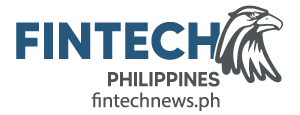
Security Bank Invests 12.3% Revenue on Tech — Here’s How They Prioritise It
by Rebecca Oi August 15, 2023The digital age has ushered in a new era of banking efficiency, enabling financial institutions to connect with even the most remote segments of society.
Faced with the challenges of modern technology and the demands of discerning customers, banks now view technological investment as paramount to their success.
Taking this into stride, Security Bank in the Philippines has committed itself to technological evolution, investing a slice of its earnings in tech advancements.
With a firm focus on enhancing the customer journey, Rahul S. Rasal, EVP & Head – Retail Banking Segment of Security Bank spoke to Fintech News Philippines on the positive outcomes of these investments for retail customers.
Enhancing customer experience through technology investments
In 2022, Security Bank devoted 12.3 percent of its revenue to technology investments, reflecting its commitment to improving customer experiences. These investments have yielded positive outcomes for retail customers across various aspects of their journey with the bank.

Rahul S. Rasal, EVP & Head – Retail Banking Segment of Security Bank
Rahul explained, “Our belief has always been that you should invest in technology and data, or you don’t invest, period. Having only one is like having a laptop when you also have an iPhone where you only use it for SMS texts.”
The bank which has 317 branches nationwide harnessed data and analytics capabilities to optimise customer targeting, underwriting, onboarding, and engagement.
Leveraging data from telcos, the bank has integrated telecommunication scores with credit scores to streamline the underwriting process and make instant decisions on loan applications.
By building a loan origination system, the bank can establish upfront rules based on past customer data, facilitating personalised and faster loan processing for new and existing customers.
Additionally, Security Bank has embraced eKYC (Electronic Know Your Customer) procedures, eliminating the need for physical document submissions during onboarding.
“Understanding of data allowed us to eliminate and make the experience better. At the same time, technology allowed us to build the experience when a customer who applies is decided instantaneously”, Rahul emphasised.
Implementing AI-driven in-app chat features has enhanced customer interactions, allowing seamless communication and quick issue resolution.
Driving industry-leading Net Promoter Scores (NPS)
A key goal for Security Bank is to become the industry leader in Net Promoter Scores (NPS) across various segments, especially in retail banking.
To achieve this, the bank has implemented a comprehensive strategy centred around understanding and catering to customer needs and preferences.
Rahul is clear about the bank’s goals stating, “We aspire to be the most customer-centric bank in the Philippines.”
Security Bank has centralised customer information by utilising data lakes, facilitating a deeper understanding of customer behaviour and preferences. This data-driven approach allows the bank to offer tailored products and services, leading to higher customer satisfaction and improved NPS.
Security Bank’s focus on creating a customer-centric online platform, SB Online, ensures that customers can interact seamlessly with the bank and access a wide range of services efficiently. This form integrates all communication, products, and services, enabling consistent and streamlined customer interactions.
The role of data in retail segment growth
Security Bank acknowledges the critical role of data in driving the growth of the retail segment.
The bank can centralise data from various sources by leveraging data lakes, enabling a unified view of customer information. This comprehensive understanding empowers the bank to offer personalised and relevant products and services, thus fostering more robust customer relationships and loyalty.
“For us, data and technology are not enablers; they are the drivers of our business model. Everything that we do will be subservient to these two”, said Rahul.
Data analytics also plays a pivotal role in risk management. The bank’s real-time risk management tool monitors customer behaviour, providing immediate alerts on deviations from established patterns.
This proactive approach aids in identifying potential risks early and implementing suitable risk mitigation measures.
Enhancing credit scoring and customer onboarding
With technology and data as the driving forces, Security Bank has made significant strides in transforming its credit scoring and underwriting processes.
By analysing internal and external data, including information from bureaus and telcos, the bank has built application scores for potential customers.
This enables them to underwrite new customers based on their scores and behavioural patterns, even if they are new to credit. This approach has allowed Security Bank to expand its customer base significantly, with over 50 percent of customers new to the bank this year.
“Our ability to underwrite customers based on scores and application data has been instrumental in bringing new customers to the bank. We focus on expanding the universe of customers while ensuring sound risk management,” said Rahul.
Focusing on customer journey and experience
Security Bank’s commitment to becoming an industry leader in NPS is reflected in its emphasis on customer experience and journey.
The bank continuously analyses customer satisfaction (CSAT) data to identify pain points and improve customer experience. One significant area of focus is the delivery of banking products, where Security Bank aims to reduce delivery times and enhance convenience.
“We believe in eliminating pain points and optimising customer journeys. By reimagining how customers interact with us, we can deliver a superior experience through faster delivery or innovative digital solutions,” affirmed Rahul.
Branch rationalisation and digital transformation
While many banks globally are reducing their branch networks, Security Bank’s approach is driven by customer needs and market realities.
While they plan to optimise branch locations in some areas, they recognise that specific customer segments, particularly wealthy customers, value face-to-face interactions.
The bank is deploying technology and data-driven efficiencies to improve branch servicing and reduce wait times.
“Our strategy revolves around self-service, but we understand the importance of personalised interactions in certain segments. We strive to balance branch optimisation and improved digital capabilities,” explained Rahul.
Navigating the emergence of digital banks
The entry of digital banks in the Philippines has presented opportunities and challenges. While digital banks have excelled in user experience, reach, and customer engagement, their underwriting capabilities remain challenging.
Security Bank sees potential collaboration with digital banks, telcos, and traditional banks to create an ecosystem that addresses customer underwriting effectively.
“We envision a symbiotic relationship with digital banks, traditional banks, telcos, and bureaus. Together, we can provide a comprehensive financial ecosystem that leverages technology and data for effective underwriting and offers customers a seamless experience,” said Rahul.
Integrating ESG priorities into the retail division
Security Bank has integrated environmental, social, and governance (ESG) and sustainability considerations into its daily operations, anticipating their importance even before they became mandatory.
Socially, the bank has launched diverse programs benefiting employees and communities while advocating for financial literacy and customer service, particularly during the pandemic.
Over the past three years, the bank has achieved significant ESG progress. In 2020, it established a comprehensive Sustainability Framework aligned with UN goals and the Paris Agreement, leading to a dedicated Sustainability Committee overseeing integration across operations.
In 2021, the Environmental and Social Risk Management Framework was introduced, emphasising strategies and due diligence to identify and mitigate relevant risks, including halting financing for new coal-fired plants by 2033.
Recently, the Board of Directors approved the Sustainable Finance Framework, guiding the issuance of Sustainable Finance Instruments for projects adhering to global sustainable principles.
In retail banking, Security Bank offers products for small enterprises, including supply chain financing, leasing services, and various loans.
“Despite ESG regulations primarily targeting commercial banking, Security Bank proactively extends these policies to retail, with support from affiliated Mitsubishi UFJ Financial Group (MUFG), facilitating collaborative learning,” said Rahul.
Security Bank’s adoption of an Integrated Reporting framework for its 2022 disclosure underscores its commitment. The report “Toward meaningful impact” aligns with the bank’s mission pillars and presents its performance, strategy, and governance in commercial, social, and environmental contexts.
The journey towards becoming the most customer-centric bank
Security Bank’s journey towards becoming the most customer-centric bank in the Philippines is marked by strategic investments in technology, data, NPS, and ESG priorities.
These investments have borne fruitful results, enriching the customer experience, optimising operational efficiency, and positioning the bank as a leader in the competitive landscape.
Security Bank is poised for continued growth and success in the dynamic banking world by staying focused on innovation, customer satisfaction, and sustainability.








